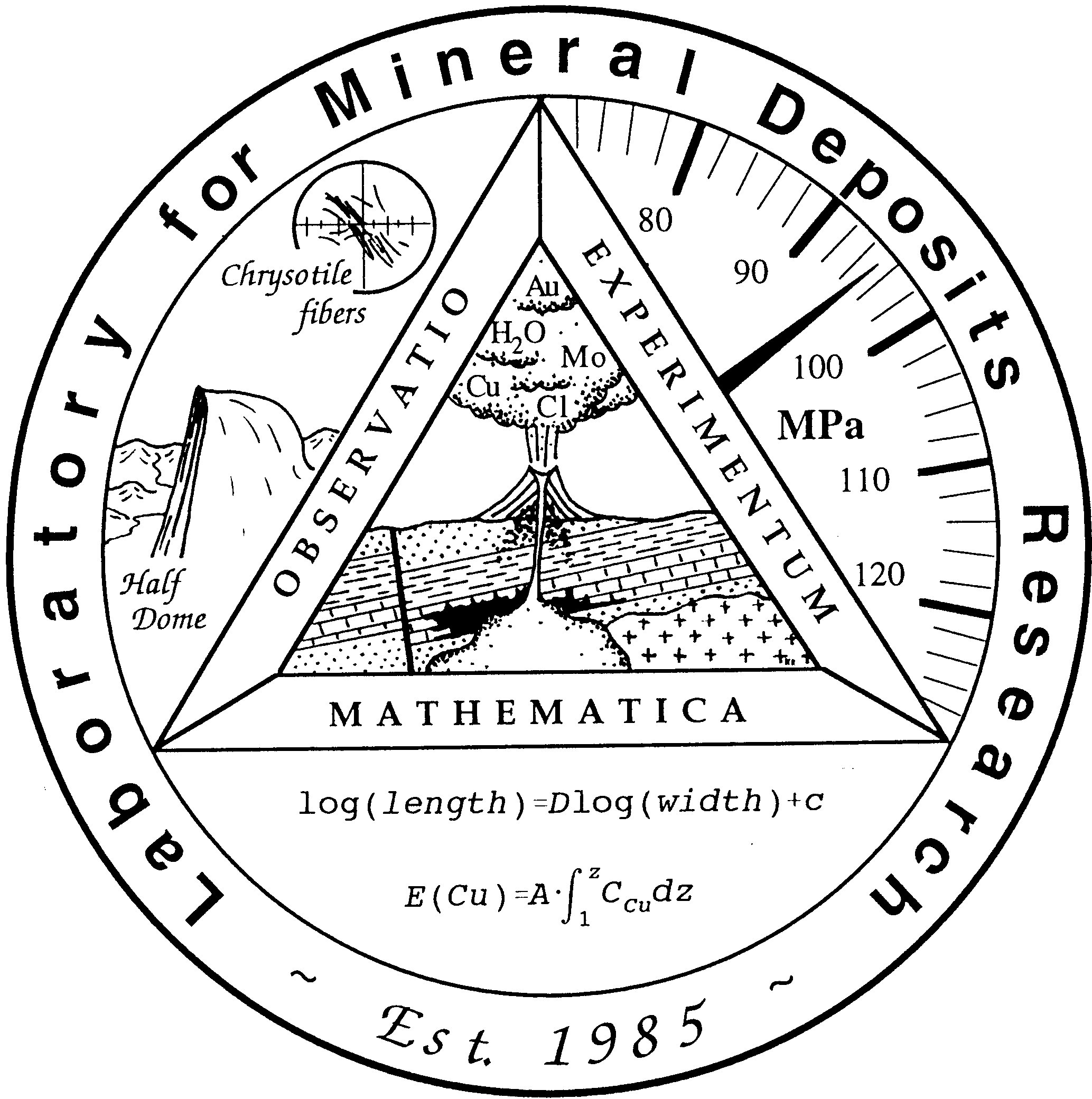|
|
||
 |
AcknowledgementThis work would not be possible without the support of the National Science Foundation, the Department of Geology, and the University of Maryland. |

Summary of Research Interests in the Fields of Granite-Related-Ore- and Hydrothermal Systems
OVERVIEW
Our recent research has involved physico-chemical experimentation, and mass transfer and thermodynamic modeling of the distribution of copper, silver, gold, bismuth, zinc, arsenic, manganese, chlorine, sulfur and other elements among the phases melt, brine, vapor, pyrrhotite, magnetite, Fe-S-O melts, silicate minerals, and other phases that can exist in magmatic-hydrothermal sub-volcanic environments and below. We have attempted to explain why mineral deposits of certain types (e.g. high Mo/Cu v. high Au/Cu porphyry deposits) are associated with particular intrusive types. We have also been active in studying the fundamental properties and reactions of chrysotile asbestos under a wide set of conditions.
MASS TRANSFER AD THERMODYNAMIC MODELING
We have developed a chemical model for progressive devolatilization of both vapor and brine from a crystallizing silicate melt. The model is unique in its ability to simulate the partitioning of any number of elements among melt, vapor, brine and crystalline phases simultaneously, accounting for inter-element effects (e.g., how the concentration of HCl in the magmatic volatile phase affects the concentration the FeCl 2 or CuCl concentration in a magnetite-saturated magmatic system at a given f(O 2 ) ,T, and P). The modeling suggests chemical conditions that maximize the likelihood of ore formation for a given ore metal, and for a given set of extensive and intensive variables. Models of metal and HCl partitioning can be used to predict the concentration of non-sulfurous components in a geothermal (or ore-generative) magmatic - hydrothermal fluid at its source, and, by considering fugacities of sulfur and oxygen, can be used to predict model compositions of the hydrothermal fluids. We are also continually exploring the proper thermodynamic formulation of ore metal partitioning equilibria.
HIGH TEMPERATURE HYDROTHERMAL AND RELATED EXPERIMENTATION
Experiments ongoing in our lab or in collaboration with other labs include:
· the partitioning of As among the phases melt, vapor and brine at 800 C and 100 – 150MPa
· the partitioning of Ag among the phases pyrrhotite, magnetite, dry rhyolitic melt, and Fe-S-O melt at temperatures above 1000 C.
· Cu partitioning between melt, vapor and brine in the presence of sulfur and chlorine at magmatic conditions
· diamond cell studies of granitic melt equilibria
· partitioning of Bi in magmatic systems at 800 C and 100 MPa
· diamond cell and 0.1 MPa studies of the rate of chrysotile deocomposition
FIELD WORK
Field work is s a necessary component of our work in the LMDR. We have an ongoing project in Yosemite National Park, and other areas of the Sierra Nevada, studying the textures and structures of granitic dikes. The object of this study is to elucidate the relationship among the processes of crystallization, volatile phase exsolution and textural development in high level granitic magma chambers.

